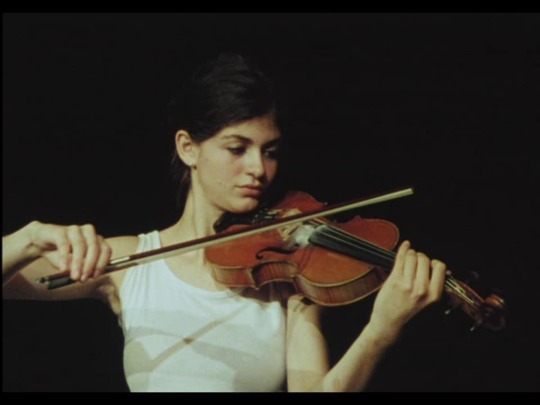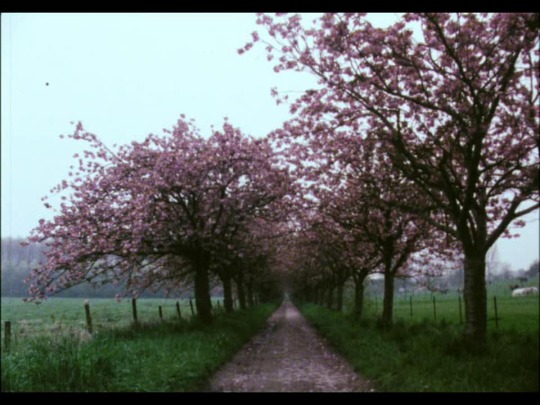#Boris Lehman
Text
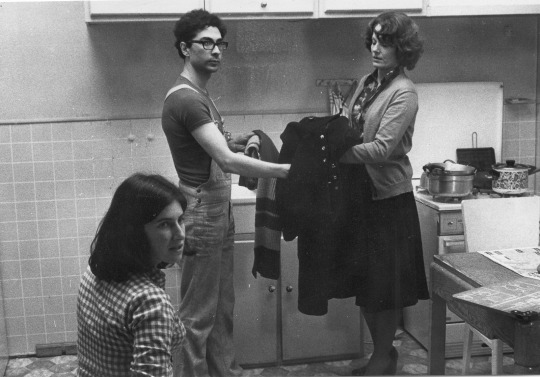
Chantal Akerman, June 6, 1950 – October 5, 2015.
With Boris Lehman and Delphine Seyrig on the set of Jeanne Dielman, 23, quai du Commerce, 1080 Bruxelles (1975).
96 notes
·
View notes
Text

Chantal Akerman ,Boris Lehman, and Delphine Seyrig on the set of
JEANNE DIELMAN, 23, QUAI DU COMMERCE, 1080 BRUXELLES (1975).
13 notes
·
View notes
Photo

(via Palais-de-Tokyo_Signal_Mohamed Bourouissa)
TOKYO PALACE
Opening: February 15. 2024 | 6 p.m. - 9 p.m.
Signal, Mohamed Bourouissawith: Christelle Oyiri, Ibrahim Meïté Sikely, Neïla Czermak Ichti, Abdelmajid Mehdi, Collective Hawaf, LILA
Touch the senseless : Accroc, Carla Adra, Asteréotypie, Agathe Boulanger, Center Familial de Jeunes, Michel François, Signe Frederiksen, Dora García, Generativ Process, Tania Gheerbrant, Jules Lagrange, Boris Lehman & Club Antonin Artaud, François Pain, Patrik Pion, Abdeslam Ziou Ziou & Sofiane Byari.
Worried past - Museums, exile and solidarity : a project of Kristine Khouri & Rasha Salti.
Dislocations : Majd Abdel Hamid, Rada Akbar, Bissane Al Charif, Ali Arkady, Cathryn Boch, Tirdad Hashemi, Fati Khademi, Sara Kontar, Nge Lay, Randa Maddah, May Murad, Armineh Negahdari, Hadi Rahnaward, Maha Yammine & Misha Zavalniy
Exhibitions: 02/16/ - 06/30/2024
Expositions du 16/02/ au 30/06/2024
13 avenue du Président Wilson, Paris, France
https://palaisdetokyo.com/en/agenda-palais-de-tokyo/
image credit: Mohamed Bourouissa, Untitled , 2023,
courtesy of the artist and Mennour, Paris.
0 notes
Text


Leçon de vie (1995, Boris Lehman)
9 notes
·
View notes
Photo

BL : Qu’est-ce que tu penses de l’art et de l’artiste ?
JM : Je ne peux pas parler de l’art et des artistes. Je peux seulement parler de certaines personnes qui peignent. Ce sont des peintres. Ceux qui jouent de la musique. Ce sont des musiciens. Écrivains, poètes, l’art c’est trop général. Je ne peux pas parler d’art et je ne sais même pas ce que c’est l’art.
2 notes
·
View notes
Text
[Avant de début oui, mais c'est un peu comme avant la dernière fois.]

"We had undertaken this film "four hands", more or less mounted but remained unfinished [...] Two independent filmmakers willingly autofiction, begin to film themselves to talk to each other better. In spite of their difference of language and style, the film is above all an attempt to imitate, even to become, the other, which faces an impossibility. But the film is precisely the story of this collision."
- Boris Lehman
See and shut up, verses of Boris :
love to die / wander in the rain / under the happy summer / look tomorrow / hard-headed / suffocating / walking in the offices / and the gardens / outdoor / filming the dawn and the crowd / I'm here / leafing to infinity / swallowed / narcissus / graffiti / better know.
Before the Beginning. (Stephen Dwoskin, Boris Lehman, 2013)
6 notes
·
View notes
Photo
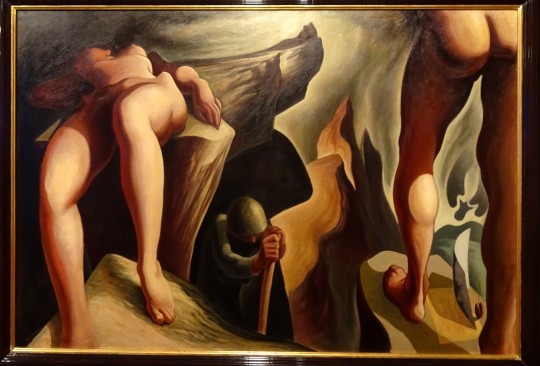

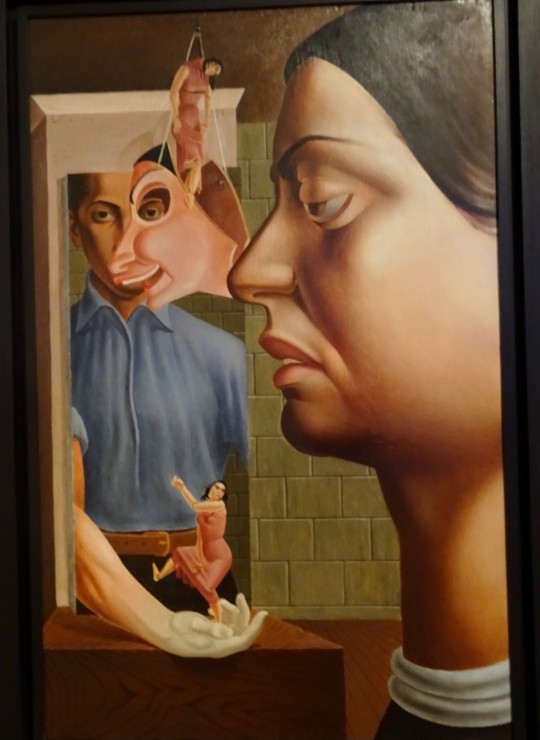


Marseille. A la Vieille Charité, une très belle expo: “Le Surréalisme dans l’Art Américain” :
- Lorser Feitelson: “Configuration post-surréelle - Récurrence éternelle”
- Helen Lundeberg: “Deux Sœurs”
- Harold Lehman: “Portrait d'un danseur, plus un sculpteur”
- Boris Margo: “Portrait de ma Mère”
- id (détail)
#marseille#vieille charité#expo#surréalisme#le surréalisme dans l'art américain#lorser feitelson#feitelson#helen lundeberg#lundeberg#harold lehman#lehman#boris margo#margo
5 notes
·
View notes
Photo


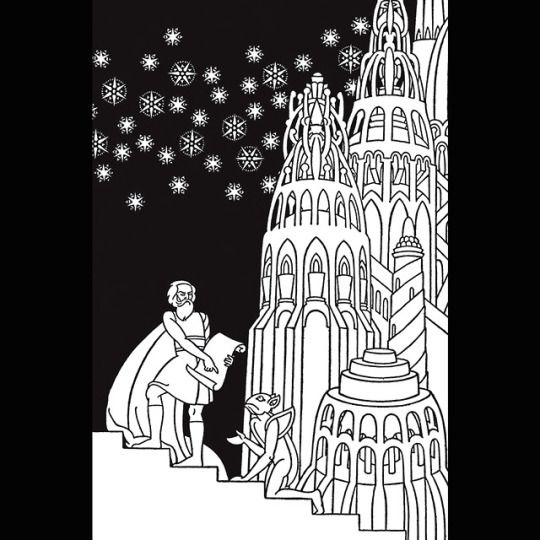




Ben Lehman’s Polaris was my first exposure to a collaborative storytelling game and, boy, did it set a high standard.
The game is concerned with “chivalric tragedy at the utmost north,” following the Knights of the Order of the Stars first as they defend the People against the demonic Mistake they created, then later as they betray them to the same.
A four player game, there is no formal game master. Rather, each player controls an aspect of the story, depending on whose character is the focus of the scene. The Heart controls the protagonist and the Mistake the antagonists while the players in the role of the New and Full Moons split the secondary NPCs and moderate disputes.
The game uses some dice mechanics, but the system is first and foremost a storytelling one. Scenes are set on the fly, with elements created or suggested by the players. Conflicts are resolved through a sort of negotiation that utilizes key phrases like “But Only If,” “It Shall Not Come to Pass,” and “You Ask Far Too Much,” to manage the action. This gives the game both a sense of poetry and makes it seem like every conflict is a bargain with the devil. Which, it kind of is.
Polaris is a melancholy game, full of decadence, betrayal, failure and death. There is also a good deal of beauty to be found in its pages, particularly in the art by Boris Artzybasheff, a clever bit of repurposing of rights-free art (the art originally appeared in the 1927 book The Wonder Smith and His Son, by Ella Young) that goes miles to establish the strange, sad atmosphere of the game.
#RPG#Tabletop RPG#roleplaying game#roleplaying games#Indie#Ben Lehman#Polaris#Boris Artzybasheff#Wonder Smith and his Son#Story Game#Tragedy#D&D#Dungeons & Dragons
188 notes
·
View notes
Link
Solved HBR Case Solution: Lehman Brothers (C): Decline of the Equity Research Department By Ashish Nanda & Boris Groysberg (Download Now)
#Solved HBR Case Solution#Lehman Brothers (C)#Decline of the Equity Research Department By Ashish Nanda & Boris Groysberg#Download Now#Solved HBR Case Solution: Lehman Brothers (C): Decline of the Equity Research Department By Ashish Nanda & Boris Groysberg (Download Now)#Writerkingdom#Writerkingdom.com#Finance HomeworkAssignmentSolutions CaseStudySolutions ExerciseProblemSolutions HomeworkAssignmentSolutions OnlineHomeworkSolutions Premi
0 notes
Photo



Life Lesson (Leçon de vie), Boris Lehman, 1995
343 notes
·
View notes
Link
In what could be a small silver lining in the dark cloud of prolonged live theater shutdowns on both sides of the Atlantic due to the coronavirus pandemic, Britain's National Theatre for the first time is showing signs that it might consider making its superb library of NT Live productions available for streaming.
Responding to countless inquiries about the subject on social media this week, TeamNT wrote: "At this stage, we're very actively looking at what we can offer to audiences while the National Theatre is closed. We hope to have more news on that very soon."
The Hollywood Reporter has reached out for further information in what could be a welcome development for theater-starved audiences worldwide, particularly as the closing of live theaters and movie houses stretches on, and home confinement becomes more oppressive.
Theaters in various parts of the U.S. affected by the government-mandated closing of live performance venues have scrambled to find ways to stream filmed productions for ticket holders, while one of the more established streaming services, BroadwayHD, which has a vast library containing hundreds of live performance-captured productions, is offering a 7-day free trial for its widely available service.
The Metropolitan Opera in New York, which yesterday confirmed the cancellation of the remainder of its 2019-2020 season, has been offering "Nightly Met Opera Streams," a free series of Live in HD presentations of its past productions, during the coronavirus closure.
In London, performing arts streaming service Marquee TV has announced a collaboration with the Royal Opera House and Royal Shakespeare Company to bring filmed productions direct to home viewers, with upcoming premieres also including work from the Royal Ballet and English National Ballet.
However, while live-performance streaming has been a growth sector now for a number of years, NT Live has remained strictly limited to short-run theatrical showings of filmed productions, including shows hailing from its London South Bank mothership, from the West End and beyond.
The organization was among the first to take significant steps into the filmed-theater digital market in 2009 when then-artistic director Nicholas Hytner sought to replicate the success of the Met Opera venture.
NT Live debuted that year with Helen Mirren and Dominic Cooper in Phèdre, which was seen by more than 50,000 people. Other productions that followed included Ian McKellen and Patrick Stewart in No Man's Land, James Franco and Chris O'Dowd in Of Mice and Men, Andrew Garfield and Nathan Lane in Angels in America, Mark Strong in A View From the Bridge, Tom Hiddleston in Coriolanus, Simon Russell Beale in Macbeth, Ruth Wilson in Hedda Gabler and Gillian Anderson and Lily James in All About Eve, to name just a few.
The film of Benedict Cumberbatch's sold-out 2015 run in Hamlet at the Barbican hit a new high for NT Live of 690,000 ticket buyers. Danny Boyle's 2011 production for the National of Frankenstein was broadcast in two different versions, allowing audiences to see alternating leads Cumberbatch and Jonny Lee Miller as both the scientist and his reanimated creation.
Current productions whose theatrical availability is mostly on hold during the coronavirus blackout include Phoebe Waller-Bridge in her original Fleabag solo show, James Corden in One Man, Two Guvnors, Andrew Scott in Present Laughter, Sally Field and Bill Pullman in All My Sons, McKellen in King Lear, James McAvoy in Cyrano de Bergerac, Mirren in The Audience and Game of Thrones favorite Gwendoline Christie in A Midsummer Night's Dream.
Also available is a film of the original Royal Court run of Martin McDonagh's Hangmen, which was in previews in its Broadway transfer when New York theaters were shutdown last week and today announced that it would not be reopening once operations resume.
Given that some NT Live presentations are expected to have an ongoing commercial life once theaters reopen, any streaming pact would likely not cover the entire library. Sam Mendes' acclaimed staging of The Lehman Trilogy, which was already in limited distribution, had just begun previews in a Broadway transfer when the shutdown occurred, putting its planned March 26 official opening and the remainder of its limited-engagement run in limbo.
Tom Stoppard's semi-autobiographical family portrait of Austrian Jews in early 20th century Vienna, Leopoldstadt, which opened in the West End to strong reviews in February and had been tipped for a Broadway move next season, is scheduled to make its NT Live debut in movie theaters June 25.
Broadway theaters ceased operations March 12 in response to a New York state mandate to close all venues with seating capacity greater than 500 as part of coronavirus precautions, with smaller off-Broadway and regional theaters swiftly following. Theaters in London and across the U.K. went dark Monday in accordance with prime minister Boris Johnson's recommendation to limit large gatherings.
59 notes
·
View notes
Text
1931’s Frankenstein and the “Slow Turn”: The Lost Art of the Subtle Scare
A friend of mine recently asked for my thoughts on subtle scares in horror. I asked her to elaborate and she responded “You know, those scares that aren’t exactly in your face but are still super effective!” Immediately, my brain shot to one of my favorite scenes in classic monster cinema: Boris Karloff as Frankenstein’s Monster, and his slow turn towards the audience. Here, we’ll discuss that particular shot and why I think it’s the perfect example of what I feel is a lost art in today’s cinematic climate.
In the age of the jump scare, it’s easy to see why some horror fans may feel jaded when watching what Hollywood has offered up as of late. However, in an effort to avoid beating a particularly dead horse, I don’t want to spend this article talking about how bad jump scares are. Overused as they may be, jump scares aren’t new, and they aren’t always a bad thing. The real problem is that big budget production companies have a tendency to get the wrong impression of what audiences want. We’ve seen it happen time and time again, where a franchise ratchets up the gore and jump scares in lieu of the more subtle elements that made the original films so well received, ie The Conjuring and Saw. As I said, jump scares aren’t always bad, and we can look back to two iconic examples to see where they’re utilized extremely well.
The first example comes at the end of the very first Friday the 13th film, where just as Alice (Adrienne King) thinks she’s home free, a rotting Jason Voorhees (Pre-Kane Hodder behemoth incarnation, here played by Ari Lehman) jump scares her out of a dream. It’s a closing jump scare that we still see used now a days, albeit without the same effectiveness the original had. Another great example comes by way of Freddy Krueger (Robert Englund) during the intro of A Nightmare on Elm Street. This jump scare signals the beginning of a chase scene through a dark alley way, jolting our adrenaline like a gun going off at the start of a race. Now a days, that jump scare would get a laugh out of the audience instead, draining all tension from the scene and revealing it’s just one of the protagonist’s friends popping out of the dark to ask them out for drinks.
With my applauding these last two examples, why is it I find the scene where we first see the Monster’s face in James Whale’s Frankenstein to be so effective? One thing that sticks out to me right away is the lack of a score in the original Frankenstein. We have been trained to recognize a coming scare the same way a boxer learns to read body language, and a lot of this has to do with musical cues. Movie goers know that when they see their protagonist stare into a dark corner of their room, the ambient noise and score of the movie slowly dropping out til it’s completely silent, a loud musical stab is sure to pop out of the darkness to startle them. However, Universal’s Frankenstein has no musical aid to warn the audience of what they’re about to see. We watch as Boris Karloff, beginning with his back to the audience and filling up the frame of a doorway, enters the room and turns ever so slowly towards the audience. The camera then cuts between shots, pulling in closer and closer on the Monster’s face with each cut, all of this playing out free of a musical score.
As synonymous as Bela Lugosi is to Dracula, as is Boris Karloff to Frankenstein’s Monster, and his legendary face creeping in closer to the audience is extremely startling. Much of this of course has to do with Karloff’s facial structure itself, but the icing on the cake comes from make up wizard Jack Pierce. Pierce is responsible for most of Universal Studios’ most iconic monster makeups, and his work on Frankenstein is one of my favorites. He and Karloff worked tirelessly on the look of the Monster, and I believe it was Karloff who suggested pulling out a bridge he wore in his mouth to help give his cheek a sunken in, corpse-like look. The blend of practical effects, and a face made for scaring audiences resulted in one of Universal’s most terrifying shots.
Of course, it takes more than just great makeup and stark silence to make for an effective and understated scare. The direction of this scene plays a big part in its delivery, and our response to it as audience members. Imagine how differently the scene might have played out if the Monster entered the room facing us, as opposed to walking in backwards. He would walk out of the shadows and into the light of the shot without the build up of the original. The decision to have the Monster enter the room with its back to the audience does two important things:
First, it gives us a sense of how disoriented the Monster is. The hulking corpse hobbles backwards and gives us a sense of his size and mass as he slowly, and carefully, turns to face his creator.
Second, by forcing us to sit through this slow, and quiet reveal, it helps to draw the audience closer towards the screen. As I watch Karloff take his time revealing the Monster’s face, I can feel my back come away from my couch as I lean forward to meet his gaze. As an audience, we are frightened and intrigued, but most importantly, we are engaged. This last piece of the puzzle is what great directors strive for, and Whale did a fantastic job capturing the moment.
Although the “Slow Turn” is a technique that’s used less often these days, it doesn’t mean it’s completely absent. A great example comes from the classic Halloween, directed by John Carpenter and released in 1978. The shot of Michael Myers, The Shape, slowly manifesting from out of the darkness behind Laurie Strode (Jamie Lee Curtis) is perhaps the closest to this “Slow Turn” idea we see used in Frankenstein. The mask seems to appear out of the dark like a ghost and the dread that moment cooks up is wonderful. Andy Muschietti’s IT holds another great example as Ben Hanscom (Jeremy Ray Taylor) flips through a book of Derry, Maine’s gruesome history. You’re likely to miss it, but in the background is Pennywise the Dancing Clown, here disguised as a librarian, staring menacingly at Ben. There is a faint smile visible, and the distance it keeps from his intended prey helps to up the “Slow Turn” scare factor of the shot. We even get a tribute of sorts to the “Slow Turn” in Capcom’s classic video game Resident Evil. A decomposing zombie looks up from its meal and turns to meet the player’s horrified gaze in an iconic cut scene that gave me nightmares for quite a while.
Frankenstein has long been my favorite of the Universal Monster movies, and I’ve often sited this moment, lasting all of 21 seconds, as one of my favorite shots in the entire film. The patience with which the scene is shot, the make up on Karloff’s face and the amount of character he puts into simply turning towards the audience is so beautifully effective. As I said, jump scares have their place, but the “Slow Turn” is an art form that embodies all that I love about classic horror. Though we may be able to find other examples of it in horror cinema history, for me, the Monster’s entrance is a moment whose electricity is hard to resurrect.

#frankenstein#frankenstein’s monster#boris karloff#james whale#victor frankenstein#universal monsters#horror movies#classic horror movies#friday the 13th#a nightmare on elm street#jason voorhees#freddy krueger#halloween#john carpenter#it 2017#andy muschietti#resident evil#moonlight madness#moonlight madness reviews
51 notes
·
View notes
Text
Experimental Film
VIVIAN OSTROVSKY - PLUNGE
16 films by Vivian Ostrovsky made between 1982 and 2014.
"An intimate - yet humorous - act of cultural resistance, the cinema of Vivian Ostrovsky is a gesture, implying the filmmaker's entire body - as she travels around the world, carrying the gear, framing with a camera-eye. She digs in archival footage for an immense repertory of cinematic gestures performed by others - and playfully edits them with her own Super-8 shots. Multi-culturalism and polyglotism are woven into this poetics of displacement." - Berenice Reynaud
2 DVDs (With Subtitles Subtitles) / 2019 / 215 minutes
MARIE LOSIER - HELLO HAPPINESS!
10 short films by Marie Losier.
French-born New York filmmaker Marie Losier learned the 16mm Bolex camera from George and Mike Kuchar and made a series of "Dream Portraits" of New York filmmakers, theatre, music and performance artists.
Marie Losier is the most effervescent and psychologically accurate portrait artist working in film today. Her films wriggle with the energy and sweetness of a broken barrel full o' sugar worms!!! No one makes pictures like Marie, Edith Sitwell's inner Tinkerbell!!! - Guy Maddin
Marie Losier's movies are as sweet and sassy as her name and well worth a gander or goose by all off beat cineastes. So beat off to a different drum and marvel at the wad of wonders that only a French woman could generate. Take a trip down a sprocketed spiral of celluloid strips into a glory hole of impressive dimensions. What pops through will surely enlarge with persistent, ocular manipulation. - George Kuchar
SELECTED SHORTS IN 16 MM:
L'Oiseau de la Nuit 20', 2016
Bim, Bam, Boom, las Luchas Morenas! 13', 2014
Alan Vega, Just a Million Dreams 16', 2014
Byun, Objet Trouve 7', 2012
Slap the Gondola! 15', 2010
Manuelle Labour 10', 2007
Eat My Make-up! 6', 2005
Electrocute Your Stars 8', 2004
Bird Bath and Beyond 13', 2003
The Ontological Cowboy 16', 2005
DVD (With French Subtitles) / 2016 / 124 minutes
SANDY DING - PSYCHOECHO
By Sandy Ding
Sandy Ding is an experimental filmmaker who lives and works in Beijing, China. He graduated from CalArts Film School USA in 2007 and started teaching in China Central Academy of Fine Arts since 2008. He produced several psycho-active films with the idea of combining ritual process in projection and sound. His work is energy patterns, telling mysteries with abstractions or powerful symbolic elements. He is equally interested in live performance of theater projections, untypical gallery projections, installations and live noise music to extend the idea of experimental film.
FILMS
Mancoon 10 min, 16mm, silent, color, 2007
Water Spell 42min, 16mm, color, 2006-2007
Prisms 20 min, 16mm, color, 2012
Dream Enclosure 18 min, 16mm/Digital, b/w, 2011-2014
The Radio Wave Beneath the Dirt Ice and Flowers 10 min, 35mm, silent, b/w, 2006
BONUS
River in the Castle 4 min, 16mm, silent, b/w, 2016
Original noise music: "Peacock and Ocean Erosion" by Liquid Palace 28 min, 2016.
DVD / 2016 / 132 minutes
STUDIO EEN: EXPERIMENTAL FILMS FROM THE LOWLANDS
a collection of 12 films from the Dutch film cooperative Studio Een
In 1990, as a student, Karel Doing decided to create Studio een. Many artistic, avant-garde, underground movements and counterculture movements seemed to be over. The rise of video and its academic use began to compete with Super8. To work against the decline of the Super 8 format and techniques, Karel Doing and two of his friends (Saskia Fransen and Djana Mileta) from the art school in Arnham, started to think about creating a new space and promoting the invention of DIY techniques for filming and processing Super8 films.
In this particular context, Studio een was launched. Conceived as a actual workspace, Karel Doing, Djana Mileta and Saskia Fransen, began by establishing it within a large network of festivals, galleries and other workspaces. They bought optical printers from a professional laboratory that was set to shut down and started to learn by themselves, out of necessity, how to process film. It wasn't long before Studio een became well-known in DIY film circles and began to host various artists who come to meet each other, not only to exchange ideas and work together on the use of Super8 or 16mm, but also to experiment with diverse narrative and sound forms. Some members, Joost Rekveld for example, chose to pursue a career as a musician as well as a filmmaker.
After 7 years in Arnhem, Studio een moved to Rotterdam where it continued to thrive. It became a model for many artists in creating their own laboratories, research centers and studios dedicated to experimental cinema.
Studio een no longer exists, but the laboratory itself continues in Rotterdam under the name of Filmwerkplaats by being involved in new experimentations in filmic creation while promoting the works of members and invited artists.
This DVD edition includes works of various Dutch artists who had a main role in the early years of Studio een, from 1992 to 1996.
DVD-9 (Black and White, With Booklet) / 2016 / 114 minutes
MY SEVEN PLACES
By Boris Lehman
My Seven places' starts at the moment I was evicted from several places which are dear to me. They served me well as homes, both as place for living and working. This was the start of my urban wandering, which would take me ten years - a journey of 300.000 kilometers - before returning just about to my starting point. The adventure was both physical and metaphysical. Fragments of documentary films, a personal diary, bedside-table notes, piece of fiction, 'My Seven places' is an essay about passing time, embellished by a jumble of reflections both light and serious; finally, it is an attempt to simply exist. The fourth episode of my autobiographical fiction, which started in 1983
2 DVDs (French, With English Subtitles) / 2015 / 323 minutes
CINEXPERIMENTAUX 10: CHRISTOPHE KARABACHE
A documentary on the Lebanese experimental filmmaker Christophe Karabache by Frederique Devaux and Michel Armager.
Christophe Karabache is an independent French-Lebanese filmmaker born in Beirut in 1979. In 2000, he began exploring various film formats at l'Etna, an alternative workshop in Paris. He shifts between documentary and fiction formats, bringing to mind the wounds of Lebanese society, displaced beings, the fragmentation of identity. Pulsating scenes and jolting cuts demonstrate his desire to destroy cliches. The shock of the imagery in his feature-length films, made after 2010, bears witness to a penetrating critical eye on Lebanon's cultural shifts and the rupture of meaning.
DVD (French, With English, French Subtitles) / 2012 / 74 minutes
LA CICATRICE INTERIEURE
La Cicatrice interieure of Philippe Garrel, 60', 1972
with: Nico, Philippe Garrel, Pierre Clementi, Christian Paffgen, Daniel Pommereulle, Balthazar Clementi, Jean-Pierre Kalfon
DVD (French, With English, French, Japanese Subtitles) / 1972 / 60 minutes
MARCEL HANOUN - OCTOBRE A MADRID
By Marcel Hanou
DVD (French, With English Subtitles) / 1964 / 63 minutes
MAURICE LEMAITRE - LE FILM EST DEJA COMMENCE?
LE FILM EST DEJA COMMENCE? (62 mins, 1951, 16mm) Digital Restoration master made by Light Cone and the CNC.
PORTRAIT OF MAURICE LEMAiTRE by Pip Chodorov (2004, 15 min, 16mm/DV)
DVD (French, With English, French Subtitles) / 1951 / 77 minutes
7 FILMS BY BORIS LEHMAN
With 7 short films by Boris Lehman
Selection of 7 films by Boris Lehman:
1. PORTRAIT OF THE PAINTER IN HIS STUDIO, 40', 16mm color, 1985
2. SILENT AS A FISH, 38', 16mm color, 1987
3. EARTHEN MAN, 40', 16mm color, 1989
4. THE LAST SUPPER The Gospel According to St Boris, 14', 16mm color, 2003
5. ALTERATIONS AND REPAIRS A Portrait of Richard Kenigsman, 51', 16mm couleur, 2009
6. ARTIST BEING WATCHED, 36', 16mm couleur, 2008
7. THINGS THAT CONNECT ME WITH BEINGS, 15', 16mm couleur, 2010
2 DVDs (French, With English Subtitles) / 234 minutes
CINEMAS DE TRAVERSE
Documentary about films and experimental practices in the world.
This journal was compiled between 2005 and 2009 on four continents. This is a subjective journey through the approaches and experimental procedures to show the magnitude of this research and to honor filmmakers who participate in the history of cinema: Jonas Mekas (USA), Peter Kubelka (Austria), Boris Lehman (Belgium), Joseph Morder (France), Peter Tscherkassky (Austria), Guy Sherwin (UK) among others. These byways lead us to the places of production and distribution networks created specifically for experimental films.
2 DVDs (French, English, With French, English Subtitles) / 182 minutes
CINEXPERIMENTAUX 1-4: MARTINE ROUSSET, NICOLAS REY, VIVIAN OSTROVSKY & PIP CHODOROV
A documentary film by Frederique Devaux and Michel Amarger about 4 experimental filmmakers: Martine Rousset, Nicolas Rey, Vivian Ostrovsky & Pip Chodorov.
The strength of contemporary experimental cinema has encouraged us to meet and to film the most active filmmakers, distributors, movers and shakers in this art form. This developed into a number of autonomous portraits, forming a series demonstrating the plurality of approaches and practices in experimental film. Our independent productions introduce or complement the work of the artists, technicians, distributors and programmers who participate in the life of contemporary art cinema.
Frederique Devaux and Michel Amarger have been making experimental films and documentaries since 1980. Frederique Devaux is film critic and professor. Michel Amarger is a journalist, specializing in cinema, for Radio France International.
This DVD is a collection of the first four Cinexperimentaux titles by Devaux and Armager
DVD (French, With English Subtitles) / 168 minutes
CINEXPERIMENTAUX 5: ROSE LOWDER
A documentary by Frederique Devaux & Michel Amarger on the filmmaker Rose Lowder. Includes 12 films by Lowder.
Rose Lowder is an artisan of cinema. Her 16mm camera takes the place of a loom for the weaving of images. She has consecrated her life to these tapestries, these embroideries whose motifs have for many years come from nature, in a state of incessant becoming. Like her elders, the Impressionist painters, she renders her bouquets stroke by stroke, image by image, color after color, to give life to her pointillist compositions in motion.
2002, 24min. Followed by 12 films by Rose Lowder : CHAMP PROVENCAL 1979, 16mm, color, 9' VOILIERS ET COQUELICOTS : 2001, 16mm, color, 2' BOUQUETS ECOLOGIQUES #21 a 30 : 2003-2005, 16mm, color
DVD (French, With English Subtitles) / 50 minutes
CINEXPERIMENTAUX 6: MARCEL HANOUN
A documentary by Frederique Devaux and Michel Amarger
+2 films by Marcel Hanoun
Marcel Hanoun, one of the most innovative of filmmakers, gives us what he names "a lesson in cinema." Frederique Devaux and Michel Amarger filmed this piece at his country house, composing an abundantly rich portrait. Film clips and sparks of theoretic bravura testify to the feverish creativity and the drunken agitation behind which lurks the ever-composed voice of the filmmaker.
DVD (French, With English Subtitles) / 150 minutes
CINEXPERIMENTAUX 7: STEPHANE MARTI
A documentary film by Frederique Devaux and Michel Amarger
+ 3 films by Stephane Marti
Stephane Marti is a teacher and film-maker who, since 1976, has been expounding the plasticity of experimental cinema, freeing it from the dominant codes of narrative cinema. An avid defender of Super-8mm film (which he has been using for 30 years), he has fought for the acknowledgement of its excellence as a film-making tool. His work, which screens in festivals and at international events, has been the subject of numerous interviews and articles. Flamboyant, baroque and sensual, his work revolves primarily around the question of the body and the sacred.
+ 3 films by Stephane Marti
Allegoria 1979 Super8 14min
Diasparagmos 1980 Super8 13min
Mira Corpora 2004 Super8 45min
DVD (French, With English, French Subtitles) / 98 minutes
CINEXPERIMENTAUX 8: COOPERATIVE LIGHT CONE
A documentary by Frederique Devaux and Michel Amarger with 4 bonus films.
Light Cone is an experimental film distribution cooperative, founded in Paris in 1982. This film covers different moments of its existence, showing its spirit, practice and daily routines, thus shedding light on one aspect of the french experimental cinema community.
The strength of contemporary experimental cinema has encouraged us to meet and to film the most active filmmakers, distributors, movers and shakers in this art form. This developed into a number of autonomous portraits, forming a series demonstrating the plurality of approaches and practices in experimental film. Our independent productions introduce or complement the work of the artists, technicians, distributors and programmers who participate in the life of contemporary art cinema.
Frederique Devaux and Michel Amarger have been making experimental films and documentaries since 1980. Frederique Devaux is film critic and professor. Michel Amarger is a journalist, specializing in cinema, for Radio France International.
Cinexperimentaux #8: Cooperative Light Cone
2002-2008, 22min by Devaux & Amarger.
+
Germaine Dulac Arabesque 1929, 6min2
Robert Breer Eyewash 1959, 2min10
Gill Eatherley Hand Grenade 1971, 5min15
Metamkine ACIDFILMDA 1992, 5min25
DVD (French, With English Subtitles) / 54 minutes
CINEXPERIMENTAUX 9: STEPHEN DWOSKIN
A documentary by Frederique Devaux and Michel Amarger
+2 films by Stephen Dwoskin
Stephen Dwoskin was born in New York in 1939 and began making independent shorts there in 1961. In 1964 he followed his research work to London where he settled and participated in the founding of the London Filmmaker's Co-op. His experimental films, for which he himself does the camera work, play with ideas of desire, sexual and mental solitude and the passage of time. In his films he also explores representation in cinema, performances, personal impressions and his own physical handicap which has been a source of inspiration for him throughout his career. His sensitive and emancipating works have been the subject of various international presentations.
DVD (French, With English Subtitles) / 114 minutes
DADA CINEMA
Rhythmus 21, Hans Richter
Symphonie Diagonale, Viking Eggeling
Le Retour a la Raison, Man Ray
Entr'acte, Rene Clair & Francis Picabia
Le Ballet Mecanique, Fernand Leger
Filmstudie, Hans Richter
Emak Bakia, Man Ray
Vormittagsspuk, Hans Richter
"The cinematographic universe of Dada is a crossroads of iconographic subversion and abstraction, formal geometry and corporal eroticism, bathed in a general indifference to "making sense" - unless it is making sense of its own deconstruction." - Philippe-Alain Michaud
DVD
DOMINIC ANGERAME - CITYSCAPES
9 films by Dominic Angerame
DVD / 119 minutes
MAURICE LEMAITRE - FILMS IMAGINAIRES (IMAGINARY FILMS)
5 short films by Maurice Lemaitre
AU-DELA DU DECLIC (10 mins, 1965-78, 16mm)
UN NAVET (31 mins, 1975-77, 16mm)
FILMS IMAGINAIRES (30 mins, 1985, 16mm)
FIN DE TOURNAGE (27 mins, 1985-90, 16mm)
L'AYANT-DROIT (22 mins, 1991, 16mm)
DVD / 120 minutes
PAUL YEDERBECK ALIAS YEDERBECK - EXPANDED ANIMATION CINEMA
"I was a bourgeois painter, then a progressive painter, and then no longer a painter, but just a worker in the pictures." - Paul Yederbeck (1965-2001)
ALIAS YEDERBECK Virtual Panorama Installation 63'
QUEST-CE QUE MONSIEUR TESTE? 26'
ALIAS YEDERBECK DOCUMENTATION FOOTAGE 16'
DVD (German, With English Subtitles) / 105 minutes
VIRGIL WIDRICH - SHORT FILMS
8 short films and 2 bonus tracks from filmmaker Virgil Widrich
FILMS
TX TRANSFORM 1998, 5', color, stereo + MAKING OF
COPY SHOP 2001, 12', b/w, stereo + MAKING OF
FAST FILM 2003, 12', color, stereo + MAKING OF
MAKE/REAL 2010, 5', color, stereo
WARNING TRIANGLE 2011, 6', color, stereo
BACK TRACK 3D & FLAT versions 2015, 7', b/w, stereo + MAKING OF LIGHT MATTER 2018, 5', b/w, stereo
TX REVERSE 2019, 5' color, stereo + MAKING OF
BONUS: VIENNA TABLE TRIP 2016, 2', color, stereo
NENA & DAVE STEWART: BE MY REBEL 2018, 3', color, stereo
DVD (With English, French, German Subtitles) / 79 minutes
http://www.learningemall.com/News/Experimental_Film_202002.html
2 notes
·
View notes
Photo
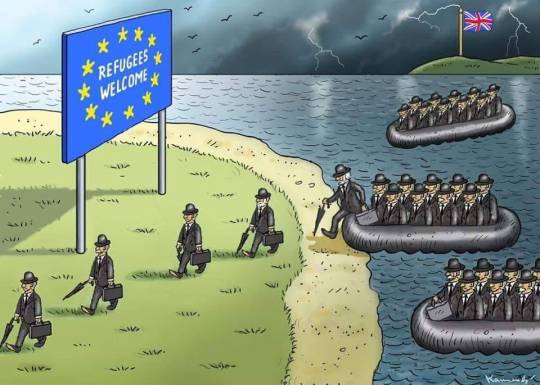
‘Get Brexit done’: Wealthy Tory donors buying EU citizenship for themselves, documents reveal
Wealthy Tory donors are reportedly taking steps to secure EU citizenship for themselves, as Boris Johnson returns to office on the back of his “Get Brexit Done” election campaign.
An investigation by Reuters found that past donors to the ruling party have applied for citizenship of the EU member state of Cyprus since the UK voted to Leave in 2016.
Cyprus offers a so-called “golden passport” scheme that allows investors to effectively buy EU citizenship if they spend around €2m (£1.7m) on property in the country – a trifling amount for Britain’s wealthiest.
Applicants for citizenship do not have to live in – or even visit – Cyprus to get the passport. Once secured a Cypriot passport gives the freedom to live, work and study in all 28, soon to be 27, EU member states – just as a British passport currently does ahead of Brexit.
Reuters said Cypriot government documents show Tory donors including Alan Howard, a top hedge-fund manager, and Jeremy Isaacs, a former Lehman Brothers chief, applied for citizenship – and that Cyprus’s interior ministry recommended the applications be approved.
Electoral Commission figures show Mr Howard donated at least £129,000 to the Tories personally and through his company between 2005 and 2009. Meanwhile Mr Isaacs made contributions of at least £626,500 to the party. He earmarked £50,000 of this sum to be spent on The In Campaign, which campaigned in favour of UK membership of the EU.
The news agency also reports the documents appear to suggest other Tory donors have applied.
The Tories’ 2015 election manifesto pledged an in-out referendum on leaving the European Union, which Leave won. The party has since swung behind taking Britain out of the EU, which will strip most Britons of EU citizenship and their freedom of movement.
Boris Johnson made “Get Brexit Done” his campaign slogan and the centre of his campaign in this month’s election, in which he won a substantial majority in the House of Commons.
The news agency said that the Cypriot government documents show that Mr Howard, as well as Mr Isaacs and his wife, all sought Cypriot citizenship in 2018.
2 notes
·
View notes
Photo
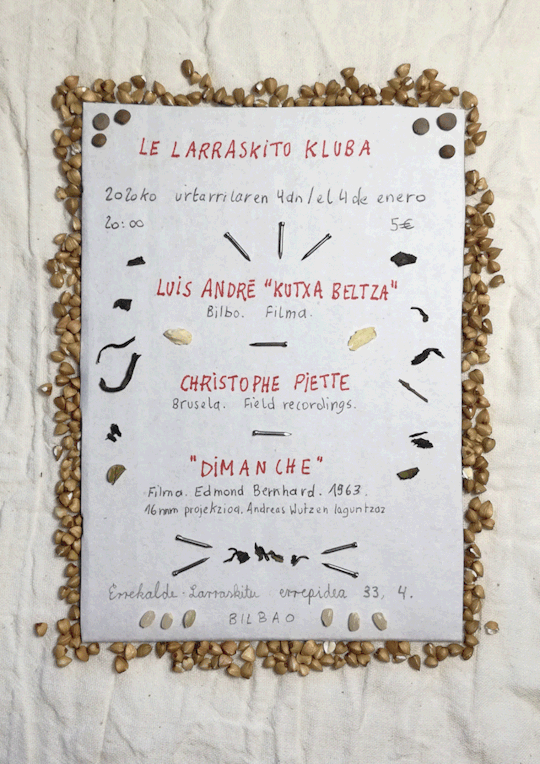
LE LARRASKITO KLUBA
2020ko urtarrilaren 4an / el 4 de enero de 2020
20:00 - 5 euro
> LUIS ANDRÉ: "KUTXA BELTZA". Bilbo. Filma.
Zuzeneko musika / Música en directo: -Gailu
> CHRISTOPHE PIETTE. Brusela. Field recordings.
> "DIMANCHE". Filma. Edmond Bernhard, 1963.16 mm proiekzioa, ANDREAS WUTZen laguntzaz
Kartela: Charlotte Bohn
_____________
Hiru proposamen elkartu ditugu urtarrilaren 4rako. Christophe Piette etorriko zaigu Bruselatik; landa grabaketetan oinarritutako kontzertua egingo digu, eta musikaria izateaz gain zinema komisarioa ere badenez, Edmond Bernharden 1963ko "Dimanche" filma ikustea proposatzen digu. Bruselako igande bat erakusten digu film honek. Ez du soinu zuzenik, ez inolako ahotsik, eta Fernand Schirrenek perkusioa erabiliz konposatutako musikak protagonismo handia hartzen du. 16 mm-tako kopia batetik proiektatuko dugu filma, Andreas Wutzen laguntzaz."Dimanche"-rekin paralelismo batzuk ditu Luis André bilbotarraren "Kutxa beltza"-k. Bilbon jarritako kamera sareko irudiak grabatu zituen bi urtez, 1997 eta 1998 bitartean. Emaitza, Bilboko egun arrunt bat erakusten duen filma da, goizetik gauera. Mikel Txopeitia Abregok "-Gailu" ezizenez egindako musikak lagundu zuen filma proiekzioetan (BAP!!, Negu Gorriak, Parafünk edo Anarirekin bateria-jole ibilitakoa berau, besteak beste). Gerora, musika instrumental hori 5 kantutara moldatu zen, hitzak ere jarrita, eta filma bera ere kantuetara moldatu zuen Andrék, Metak diskoetxeak 2002an argitaratu zuen CD-ROM-erako. Larraskitorako, jatorrizko bertsioa berreskuratu nahi izan dugu, eta -Gailu ere gurekin izango dugu zuzeneko musika eginaz. Proiekzioaren ondoren, Luis Andrérekin filmari buruzko hitz-aspertua izateko aukera ere izango dugu.
Hemos juntado tres propuestas para el 4 de enero. Viene Christophe Piette desde Bruselas; nos ofrecerá un concierto basado en grabaciones de campo, y como además de músico también es comisario de cine, nos propone ver "Dimanche", una película de Edmond Bernhard del 1963, que nos muestra un domingo de la ciudad de Bruselas. No tiene sonido directo, ni ninguna voz ni comentario, y toma mucho protagonismo la música compuesta por Fernand Schirren con percusiones. Lo proyectaremos desde una copia en 16 mm, con ayuda de Andreas Wutz."Dimanche" guarda algunas paralelismos con "Kutxa beltza" de Luis André. Entre 1997 y 1998 grabó imágenes de la red de cámaras instalada en Bilbao. El resultado es una película que muestra un día normal de Bilbao, desde la mañana hasta la noche. Mikel Txopeitia Abrego (baterista de BAP!!, Negu Gorriak, Parafünk o Anari, entre otros) acompañó con su música las proyecciones, bajo el seudónimo "-Gailu". Más tarde, esa primera música instrumental se adaptó a cinco canciones en las que se incluyó también letras y voz, y André también adaptó la película a esas canciones, para el cederrón que publicó la discográfica Metak en 2002. Para Larraskito, hemos querido recuperar la versión original, y también -Gailu estará con nosotros para hacer la música en directo. Después de la proyección haremos un coloquio con Luis André sobre la película.

LUIS ANDRÉ: "KUTXA BELTZA"
Bilbo. Filma, 1999. -Gailuren zuzeneko musikaz.
Kutxa beltza 1997an Bilbon ezarritako kontrol zentro baten karietara sortu zen. Kamera sare bat ezarri zen, hirian harturiko irudiak konputagailu batek interpreta zitzan trafikoa kudeatzeko.Espazio publikoak irudi publikoari uzten dio bere lekua eta pertzepzio-errealitatea argi-ilun izatetik abiadura izatera pasatzen da.
Bideoa irudien oinarrizko muntaia bat da, Bilboko udaletxeak trafikoaren kontrolerako estrategikoki jarrita dituen 30 kamerekin soilik egina.
Bilbao. Película, 1999. Con música en directo de -Gailu.
Kutxa beltza surge en el contexto de la instalación de un centro de control en la ciudad de Bilbao, en 1997, a través de una red de cámaras, cuyas imágenes están destinadas a su interpretación por computadoras para la gestión de tráfico.
Donde el espacio público cede su lugar a la imagen pública y donde la realidad perceptiva pasa de ser luz y sombras a ser velocidad.
El vídeo en un montaje básico de imágenes, realizado exclusivamente con las 30 cámaras que el ayuntamiento de Bilbao tiene instaladas estratégicamente para el control de tráfico.
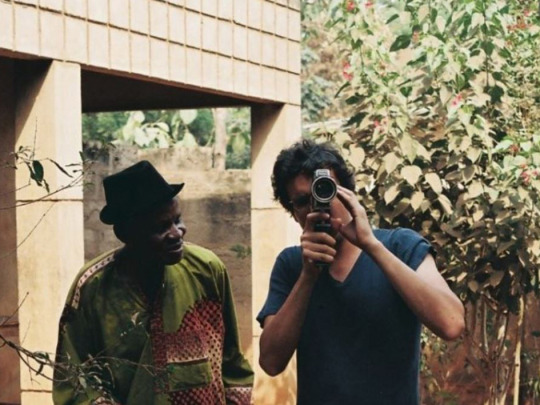
CHRISTOPHE PIETTE
Brusela, landa grabaketak.
Bidaiatzen duenean, Christophek Piettek beti darama soinean grabagailu bat, eta bidaia-egunkari modura darabil, bertan ideia solteak, soinuak eta askotariko soinuak gordez, besteak beste. Musikari modura, Belgikako R.O.T. banda inpro-esperimentaleko kide ere bada.Gainera, filmak ere egiten ditu super 8 formatuan, eta zinema komisario eta programatzailea da.
Bruselas, grabaciones de campo.
Cuando viaja, Christophe Piette siempre lleva consigo su grabadora, y lo usa como una especie de diario de viaje en el que registrar ideas, sonidos, músicas variadas, etc. Como músico, es también miembro de la banda impro-experimental belga R.O.T.
Además, realiza películas en super 8, y es comisario y programador de cine.

"DIMANCHE"
1963, 16mm-tako filma, Edmond Bernhard.
“Film didaktikoa izatekoa zen Dimanche, aisiaren arazoa mahai gainean jartzera bideratua. Bernhardek enkarguari buelta eman, eta film "tematikoari" izkin egiten dio. Inongo komentariorik egin gabe, eta espazio komunak sublimatzen dituzten irudiak erabiliz (igandeetako asperdura, guardia aldaketa, umeak jolasean, korrikalari bat basoan, futbol partida bat, ...), aparteko lana sortzen du muntaketa trebez, hustasunaren zentzuari eta munduaren fosilizazioari buruz.”
Boris Lehman (zinema zuzendari belgikarra)
1963, película en 16mm, por Edmond Bernhard.
“Dimanche estaba destinada a ser una película didáctica, dirigida a evocar el problema del ocio. Bernhard subvierte el encargo y elude caer en una película "temática". Sin recurrir a ningún tipo de comentario, y usando imágenes extraordinarias que subliman espacios comunes (el aburrimiento de los domingos, un cambio de guardia, niños jugando, un corredor en el bosque, un partido de fútbol, ...), construye con hábil montaje una obra excepcional, que trata el sentido de vacío y la fosilización del mundo.”
Boris Lehman (director de cine belga)
_____________
1 note
·
View note
